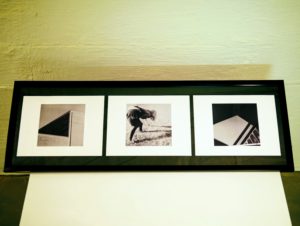Charles Olson Selected Poems – “The Lamp”
by Andrew Miller
Olson’s “The Lamp” (Selected Poems 1993 ed.) is an interesting example of projective verse both in the meaning ascribed by Olson in his manifesto, but also in a very literal way as we see this projection of energy, power, and life behind the meaning of the piece itself.
“The Lamp” is particularly interesting in that it relies more on very subtle variations in what Olson refers to as “the Field”, whereas so many of his poems in Selected have strong visual variation. Regardless, the subtlety of these variations in “The Lamp” are every bit as effective in managing “all the syllables and all the lines … in their relations to each other.” (“Projective Verse”, Charles Olson, Poetry Foundation 2009)
On first reading of the piece, an interesting feeling of having walked in on something occurs to the reader, due to the phrase starting with a lowercase “y” in “you”. Upon a second reading, the final line without period feeling as though it is left to the reader to circle back and finish the phrase with the title of the piece, “The Lamp”, which once again launches the reader into the poem.
From that first line: “you can hurry the pictures toward you”, the reader is initially directed to make haste, and then in the final breath, to take caution. The word “but” changing direction. This dialectic pulse driving “the kinetics of the thing” (“Projective Verse”) in the energy being exchanged between poem and reader. This pulse being an example of “both the acquisitions of his ear and the pressure of his breath.”
In the second argument from Olson’s manifesto, the “stance taken toward reality outside a poem as well as a new stance towards the reality of a poem itself.” Here the reader finds the relationship between denotative and the connotative.
2: there is that point that the whole thing itself
3: may be a passage, and that your own ability
4: may be a factor in time, in fact that
…
7: an event. Otherwise—and surely here the cinema
These lines get to the gist of the relationships between realities. The “projective purpose of the act of verse” (connotation) is to overcome passivity and be creation itself. Denoted by a story of hurried “pictures” beamed by “The Lamp” “toward you”, may be the whole of life itself the way a film in the cinema runs its course, an event beginning to end witnessed by everyone in the large “auditorium” (line 8) but ostensibly not created by anyone sitting there.
Directly, Olson states that the power of the creation of the film does not exceed the power of the reader, it is a “matter of creation” (line 14). In this second half of the poem, not unlike the dialectic exchange of energy from the beginning of each phrase to the end, Olson is shifting the energy of the poem from passive reader to call-to-action. Hinging this pendulum seems to be the non-word “wld” (line 13) which implies to the reader that what humanity prescribes as reality is what is the world, but Olson goes further to imply that the world must be created by active participants, and in that way he takes his passive audience and demands that the reader create the word WORLD in full spelling from those three simple letters – W L D.
Activating the reader’s creativity is a perfect example of how Olson has, as described in the piece “Creativity and the Fully Developed Bard” by Ed Sanders, “setup a creativity zone / in a Field of two or more dimensions … / To have ideas in mind / and then, as a flow / of positing / to inscribe the FIELD”.



